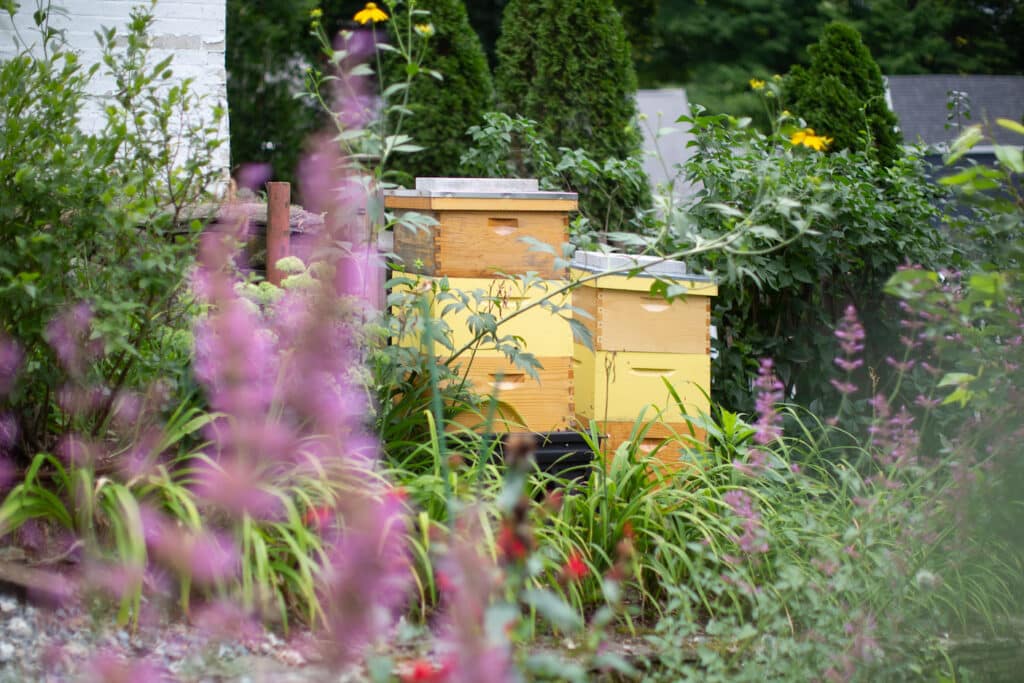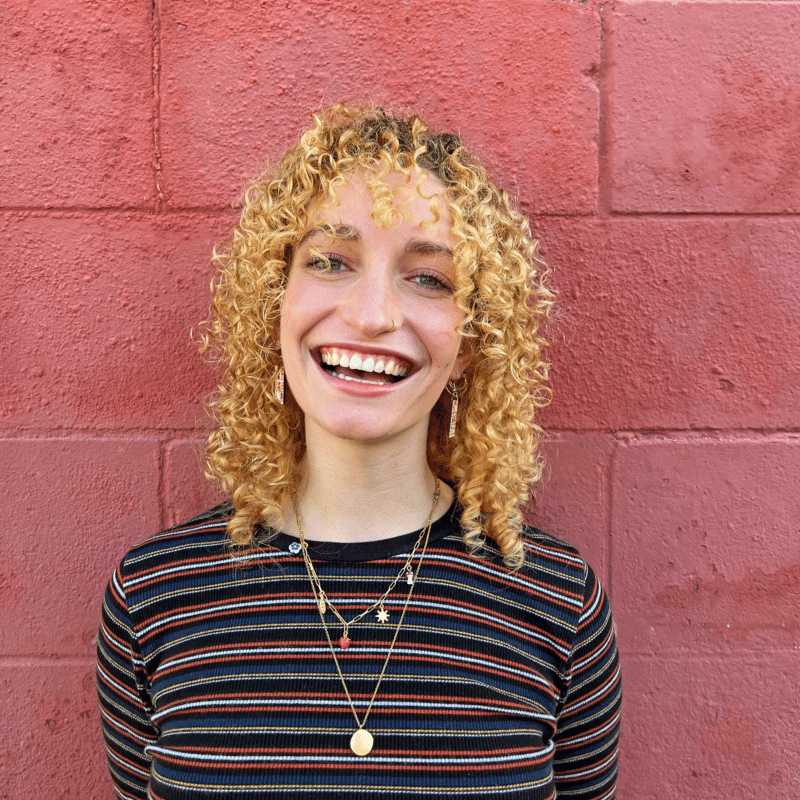Contents:
- What is a Pollinator Garden?
- Why are Pollinator Gardens important?
- Do Pollinator Gardens have to be a Certain Size?
- Plants To Include in a Pollinator Garden
- Plants to Avoid in a Pollinator Garden
- Provide a Water Source
- How to Mulch with Pollinators in Mind
- Pollinator-Friendly Gardening Practices
- FAQs
Did you know that bees are nature’s best pollinators? As bees cross-pollinate and get their nutrition, your garden will produce more flowers, yield more fruits and vegetables, and blossom beautifully overall.
— A pollinator garden is a green space specifically intended to provide pollinators with habitat. Best Bees Pollinator Habitat Gardens are custom-designed based on scientific insight into your environment’s biodiversity needs and pollinator preferences. —
If you’re a professional landscape designer or a DIY gardener, you probably can’t wait to be knee-deep in soil prepping your seasonal plants and flowers. Our expert beekeepers have created a guide to design and maintain a pollinator garden. When your garden begins to bloom, it’ll be sure to attract bees and the attention of any bee-curious neighbors.
What is a Pollinator Garden?
A pollinator garden is a space where the health and prosperity of pollinators is prioritized. This means planting a variety of native trees, shrubs, and flowers, providing pollinators with nesting options, a water source, and a space free from pesticides.
Why are Pollinator Gardens Important?
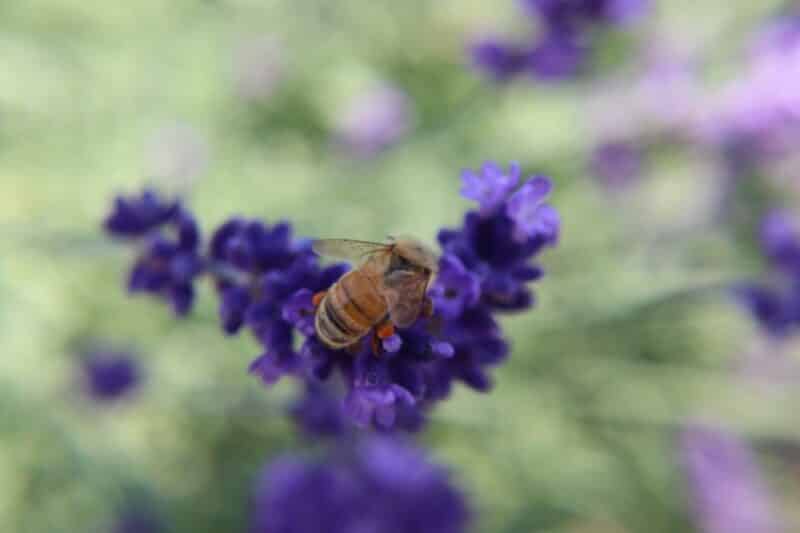
Pollinators are in decline, and the major contributing factors include the loss of habitat and use of pesticides. Commercial agricultural practices, expansion of the suburbs, and increasing urbanization all take green spaces and convert them to monoculture fields of crops, manicured lawns, parking lots, buildings, etc – all spaces that are not supportive or healthy for pollinators.
Additionally, as honey bees and native bees coexist in ecosystems, they will compete with each other for resources. We want to provide all pollinators with an abundance of resources, so that they all can thrive – rather than limit the number of competitors, let’s make sure there’s enough of what they’re competing over to go around!
Do Pollinator Gardens have to be a Certain Size?
Pollinator gardens do not have to be a certain size; every little bit of effort makes a difference. A pollinator garden can be as small as a window box, or a couple of pots on a balcony, or as large as a meadow that takes up the whole yard. Every individual pollinator garden – regardless of size – contributes to a bigger picture of more and more resources available to pollinators. Each garden adds to an interconnected web of pollinator-supporting, habitat-providing, and ecosystem-preserving oases.
Plants To Include in a Pollinator Garden
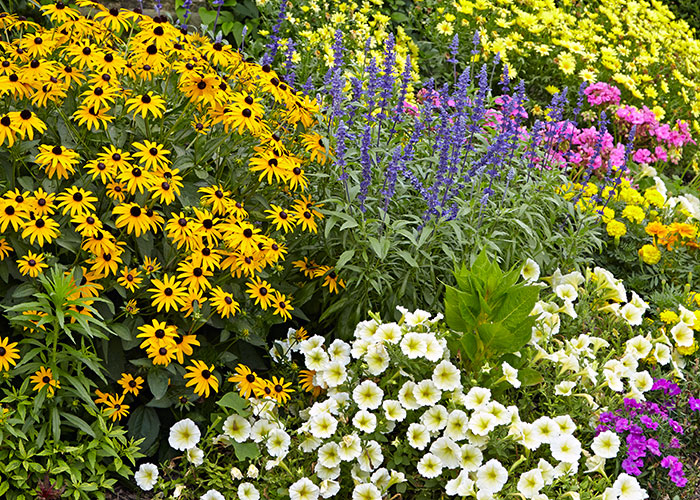
When it comes to planting for pollinators, you’ll first want to learn what flowers, trees, shrubs, and other plants are native to your area. The Xerces Society has a library of pollinator-friendly native plant lists; this is an extremely helpful resource to get you started. Your pollinator garden should consist primarily of native plants – these support the health of native pollinators and honey bees the best, and the pollinators know it. Studies have shown that pollinators prefer native plants over non-native ones.
You’ll want to have a wide variety of plants, because just like humans, pollinators need a diverse diet in order to get all the vitamins and nutrients they need to stay healthy. Additionally, planting in drifts (grouping multiple of the same type of plant together) is not only pleasing to the eye, but supports pollinators, too. It’s easier to see a group of coneflowers versus a single one! Including drifts in the design of your garden helps boost the signal to pollinators that there are lots of great floral resources here, and they should come and check it out.
A very important thing to do in a pollinator garden is to have plants that bloom during different times of the year. Pollinators will be out searching for nectar and pollen in the very early spring, through the summer, and into the fall. (For specific advice on an autumn garden, check out our previous blog post, “How to Create a Pollinator-Friendly Autumn Garden“.) Attract and support pollinators the whole time they’re active by planning your garden around the seasons, incorporating early-spring shrubs and trees, summertime flowers, and late-blooming plants, including vegetables, that will provide pollen and nectar well into the fall.
Remember that diversity is best; vary the color, species, type, and height of the plants in your pollinator garden. Pollinators need shelter, too, in addition to pollen and nectar. Shrubs, trees, and grasses provide shelter and nest-building materials. The shape of flowers is also something to diversify. Bees love composite flowers, which are blooms of many small flowers — called florets — such as coreopsis and asters. Pollinators such as hummingbirds like tubular flowers, such as bee balm. Planting flowers with a variety of shapes, like tubular, bowl-shaped & flat-topped, appeal to a large variety of pollinators.
You can plant some non-native plants, as long as they aren’t invasive. However, because these plants are not native to your area’s conditions, make sure you check your area’s grow zone. This is especially important if you want to grow some non-native perennials, because they live beyond just one growing season. They’ll need to be able to survive the winter, and knowing your grow zone will help you ascertain whether or not a specific perennial will thrive in your area.
Plants to Avoid in a Pollinator Garden
There are types of plants that you will want to steer clear of if you’re trying to cultivate a pollinator paradise. Avoid modern hybrids; oftentimes horticulturalists will breed for the most desirable traits for humans, which do not include pollen and nectar production. You also don’t want to include double flowers in your pollinator garden. Double flowers are those with multiple layers of petals, such as roses, peonies, anemones, and camellias. While beautiful, these extra petals make it difficult for pollinators to reach the pollen and nectar.
Invasive non-native plants are a definite “don’t” for a pollinator garden. Not only do they frequently not have adequate pollen and nectar resources, but invasive species are among the main drivers of the loss of biodiversity globally. When native plants are pushed out, so are the pollinators and the wildlife that relied on them for food and shelter.
One example of an invasive plant that has sneaked its way into gardens is the butterfly bush. Adult butterflies (and other pollinators) do feed on its copious resources of nectar, but butterfly larvae (caterpillars) cannot use the leaves of the butterfly bush as a food source. This slows population growth and harms butterflies overall. Instead of this invasive species, plant butterfly weed, common milkweed, and joe pye weed.
Provide a Water Source
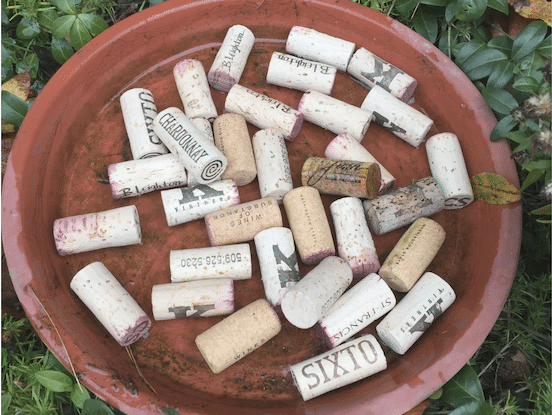
Like every hard worker, pollinators need access to food and fresh water to survive. When providing a water source for pollinators to drink from, it is important to know that bees are much better fliers than they are swimmers. Therefore, bees need a dry place to stand while drinking. In a garden pond, this could look like aquatic plants that live on the surface of the water, such as water lilies, water lettuce, and water hyacinths.
If your space doesn’t allow for a pond, no worries! Shallow dishes work well, as do sculptures and bird baths with rocks or corks in the water for perching. An important thing to note is that bees tend to prefer water that is, well, dirty. It’s why you’ll see them drinking from pools, puddles, gutters, or flower pots. Biologists believe that bees find most of their water by scent rather than sight, so a water source with a smell will be more attractive. Water that smells like wet earth, moss, aquatic plants, salt, or even chlorine, has a better chance of attracting a bee than fresh water straight from the tap.
Smelly or slimy water sources have the advantage of containing a wide range of nutrients. Although bees get most of their nutrients from nectar and pollen, they seek out water sources that are rich in vitamins and micronutrients to fill in the gaps in their nutrition. This 2016 study found that “calcium, magnesium, and potassium – three minerals most commonly found in pollen – were preferred in autumn when pollen was scarce, but were avoided in summer when pollen was abundant.” The researchers also found that, no matter the season, bees prefer sodium-rich water to deionized water. These findings were validated again in a 2021 study revisiting the topic.
So, to best support thirsty bees, let leaves and algae sit in your water source, mix some sea salt in there, and don’t place it near highly scented plants.
How to Mulch with Pollinators in Mind
Cornell University’s Department of Entomology reminds us that “not all bees live in hives like honey bees do. In fact, 70% of all the 20,000 species of bees nest under ground.” Many native solitary bee species make their nests in areas of sunny, well-drained soil. Heavy wood mulch covers these areas, making it difficult for these bees to dig through. This 2016 study from UC Santa Cruz found a negative correlation between the area of a garden with mulch cover and the number of bee species.
While not good for ground-nesting pollinators, mulch does help retain soil moisture, stave off weeds, and prevent soil erosion, so no need to forgo it entirely. Instead, utilize pollinator-friendly mulching practices! Wait to mulch until the start of summer to give ground-nesting pollinators time to emerge. Use composted pine mulch, shredded and unshredded leaves, straw and hay, or grass trimmings – all of these are lighter and will break down easily, releasing nutrients back into the soil. Make sure to avoid cedar mulch, as its smell actually repels pollinators.
Another key pollinator-friendly mulch practice is to leave some bare patches. Since mulching right up against plant stems or trunks isn’t good for the plant anyway, consider incorporating a mulch-free zone around the perimeters of plants by a few inches to a foot. The bare spots up close will allow ground-nesting bees to burrow in, while the mulch lying further out will do its job of retaining moisture, suppressing weeds, and minimizing erosion.
Pollinator-Friendly Gardening Practices
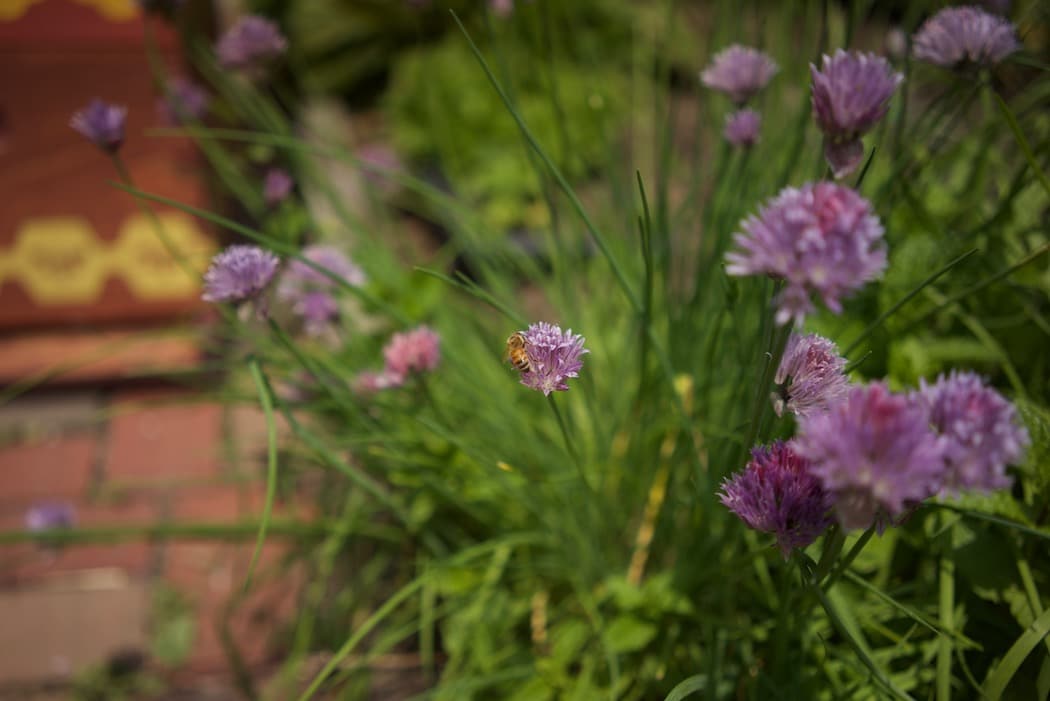
Let your garden get a little messy! Around 30% of native bee species in the U.S. nest in cavities like hollow stems or cracks and holes in fallen branches. These species include carpenter, mason, and leaf cutter bees, among others. Fallen leaves and brush piles also provide shelter for a lot of other insects, including native bumble bee species, ladybugs, wasps, beetles and others.
In the early spring, wait to clear away last year’s plant stalks, fallen leaves, brush piles, and sticks. The debris provides crucial overwintering shelter for pollinators, as well as insulation on cold nights. The longer you can wait, the better, but experts suggest on waiting to cut back and clean your garden until daytime temperatures are 50 degrees for 7-10 days in a row. In the fall, leave your leaf piles to serve as warm, safe havens for pollinators during the cold nights. You can also repurpose your leaves and use them as organic mulch.
In a pollinator garden, you’ll also want to cool it with the chemicals; commercial insecticides and pesticides harm pollinators. Herbicides, while aimed at weeds and not insects, can pose a risk to pollinator health by reducing nectar or pollen sources, resulting in poor nutrition and weakened immunity to diseases. For pollinator-friendly alternatives, check out our previous blog post, “Impact of Pesticides on Pollinators and Integrated Pest Management Strategies“.
FAQs
Q: What is a pollinator garden?
A: Pollinator gardens are spaces that are designed to support and attract pollinators.
Q: What plants should be in a pollinator garden?
A: A pollinator garden should consist mostly of a variety of native plants, and can include non-invasive, non-native, regionally adapted plants.
Q: Should I mulch my pollinator garden?
A: Mulching should be done with pollinators in mind; use light, organic mulch, and leave a mulch-free zone around the bases of plants.
Q: Should I have a water source in my pollinator garden?
A: Yes, absolutely. Pollinators, particularly bees, seek out mineral-rich water.
Q: Do bees want clean, fresh water?
A: No. Bees find their water by smell, and they seek out salty, mineral-rich water to fill the gaps in their nutrition depending on the season.
Q: What plants should I avoid in a pollinator garden?
A: Modern hybrids, double flowers, and invasive species.


